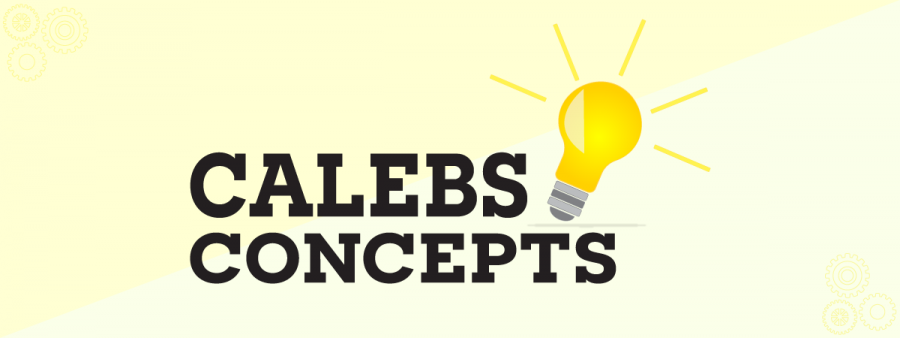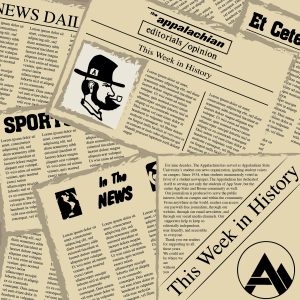Caleb’s Concepts: Journalists aren’t neutral
September 3, 2020
In early 2019, I learned how to become an “objective” journalist in Intro to Journalism. Yet, I have always questioned how objectivity exists when media outlets offer different accounts despite reporting the same events. It is no secret that The Wall Street Journal is different from The New York Times and The Economist. These outlets interview different people and different experts, offering their audience different truths.
Let us play devil’s advocate, say a publication presents news from a left/right perspective. The publication’s“objectivity” is not compromised because they still present facts. Being impartial means telling opposing truths, equating to longer pieces. Intuition suggests that the press must capture viewers from other entertainment industries. Media assumes readers will not spend time reading longer articles. Therefore, journalists shorten stories to captivate readers and filter which truths to tell.
Following this logic, we run into a problem. Pew Research states, readers spend twice as long on longer articles, implying no inverse relationship between length and engagement. Thus, we reject journalists who are constrained by space hypothesis.
Maybe the problem is not with readers, but with journalists themselves. Journalists have the power to tell a story in the order of importance, known as structural bias. You heard that right: journalists pick what readers look at, supplying them with information. Poststructuralist philosopher Michel Foucault breaks this relationship down in “What is an author?” The journalist controls the reader because the journalist possesses information the reader wants. The reader trusts the journalist to provide accurate information about events. Thus, the media
controls the consumer, giving the reader what the reader believes is true.
Yet, current events lose value during the process. The story is not real because it depicts a snapshot. Reporters decide who to interview, choosing key witnesses for their impression since talking to everyone is impossible. This depreciates the story’s value because journalists cannot capture the fullness of an event. As live footage circulates the web readers are empowered with truth.
The journalist loses power because readers now paint self-portraits of events, resulting in chaos between the media and its once loyal subjects. Readers no longer need the media to determine importance since they now bear witness. When the media offers a different account than someone’s perspective, watch out!
Adding insult to the reader’s injury, media sneers at different truths claiming impartiality. As if someone can remain neutral and stoic covering controversial topics. Human emotion determines reasoning and reporters are people, therefore, emotions determine emotional reasoning. Let us reject the objectivity myth and accept that journalists are products of their environment. While journalists follow ethical codes to maintain “neutrality,” emotions complicate neutrality. Not voicing personal beliefs does not matter because emotions impact decision making. If you are disgusted with something, facts justify feelings. It doesn’t matter if feelings are right or wrong, after-the-fact justification determines reasoning.
In “Righteous Mind,” moral psychologist Jonathan Heidt argues “rightness and wrongness” occurs when people are watching. Translation: social pressure makes adhering to norms stronger than innate morality. Journalists claim neutrality because it is the industry expectation. The New York Times, Associated Press and CNN all have ethical guidelines preventing their journalists from donating to campaigns, the Center for Public Integrity said. Yet, that does not prevent news organizations from privately donating to presidential campaigns, The New York Times reported in 2012.
Yes, journalists and editors use tools to prevent biased coverage. These include fact checking, interviewing different sources and using original sources. However, modern bias research tells us that these precautions are not enough. For example, motivated reasoning is a psychological error letting people think they let evidence speak when their bias selects the evidence. Confirmation bias, accepting information you agree with and rejecting contrary evidence, is also present. These errors occur in other subjects like statistics. Bad data means bad results; however, statisticians never claim objectivity and leave error margins. Yet, people pretend that statistics are more than what they are. They are not a truth bank; stats are a hypothesis testing tool constrained within empirical limitations, as Immanuel Kant demonstrated in “Critique of Pure Reason.” Do you need to flip a coin an infinite amount to know the probability of heads is 1 in 2?
The same should be said for journalistic integrity. Yes, journalists are biased – their emotional response to stimuli bleeds into coverage. For example, the media destroyed Richard Jewell’s life, labeling him a terrorist when he wasn’t. However, the press causes positive social change such as exposing Harvey Weinstein and spearheading the #MeToo movement. Truth is always in the middle and I encourage the press to approach truth like statisticians and use “neutrality” as a tool.













